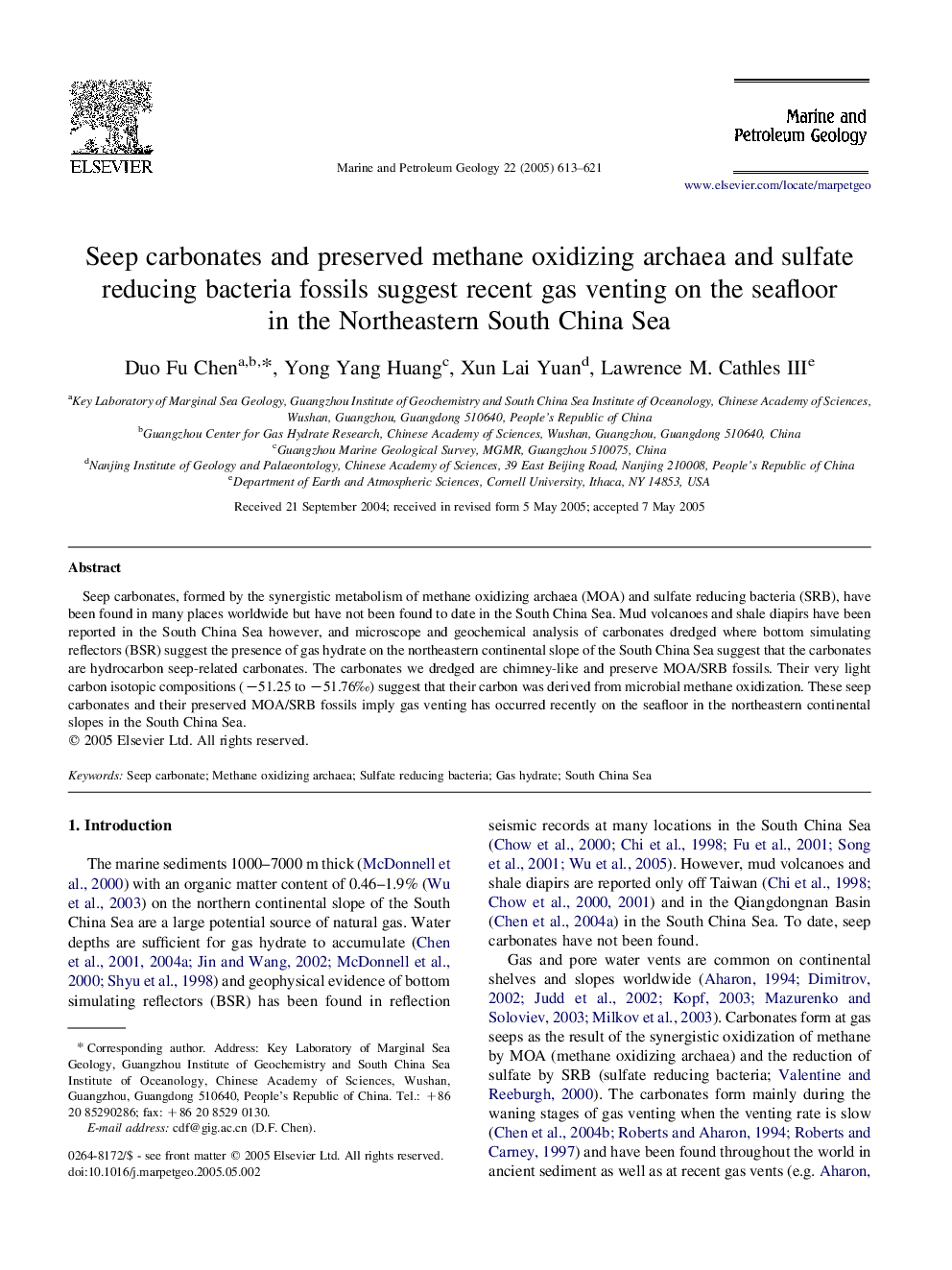| Article ID | Journal | Published Year | Pages | File Type |
|---|---|---|---|---|
| 9528428 | Marine and Petroleum Geology | 2005 | 9 Pages |
Abstract
Seep carbonates, formed by the synergistic metabolism of methane oxidizing archaea (MOA) and sulfate reducing bacteria (SRB), have been found in many places worldwide but have not been found to date in the South China Sea. Mud volcanoes and shale diapirs have been reported in the South China Sea however, and microscope and geochemical analysis of carbonates dredged where bottom simulating reflectors (BSR) suggest the presence of gas hydrate on the northeastern continental slope of the South China Sea suggest that the carbonates are hydrocarbon seep-related carbonates. The carbonates we dredged are chimney-like and preserve MOA/SRB fossils. Their very light carbon isotopic compositions (â51.25 to â51.76â°) suggest that their carbon was derived from microbial methane oxidization. These seep carbonates and their preserved MOA/SRB fossils imply gas venting has occurred recently on the seafloor in the northeastern continental slopes in the South China Sea.
Related Topics
Physical Sciences and Engineering
Earth and Planetary Sciences
Economic Geology
Authors
Duo Fu Chen, Yong Yang Huang, Xun Lai Yuan, Lawrence M. III,
